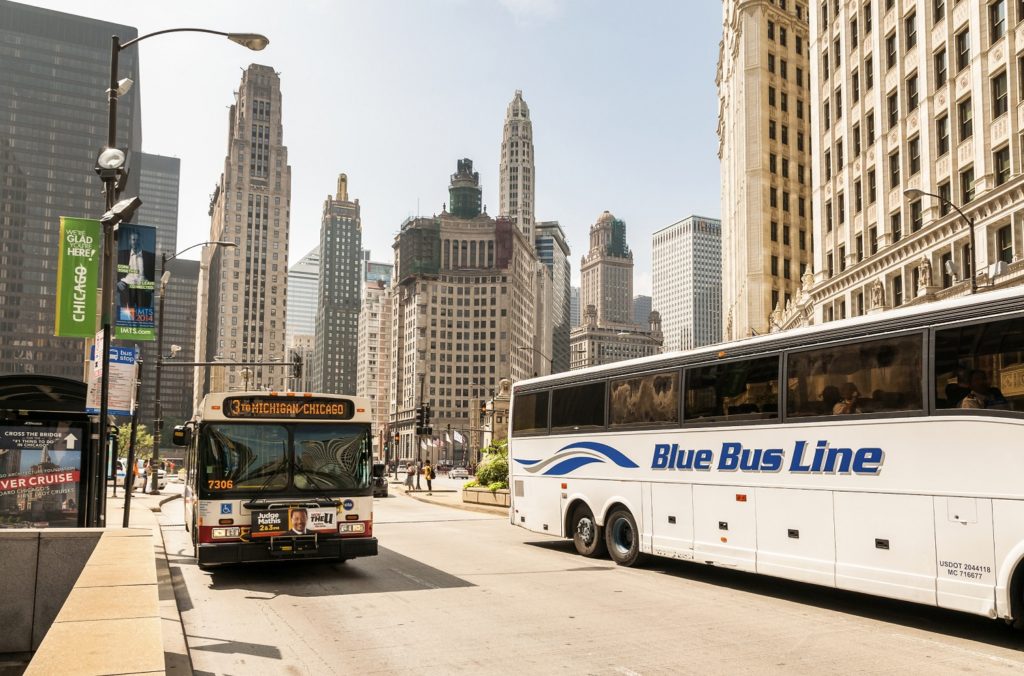
Chicago, Illinois is known for its robust public transportation system, which includes buses and rapid transit. The Chicago Transit Authority (CTA) operates both systems, which provide transportation for millions of riders each year. The CTA bus and rapid transit system is one of the largest and most extensive in the United States, serving the city of Chicago and the surrounding suburbs.
The CTA bus system is made up of over 140 routes, which cover the entire city of Chicago and many of the surrounding suburbs. The buses are clean, comfortable, and equipped with a variety of amenities such as air conditioning and free Wi-Fi. Many of the buses are also equipped with bike racks, making it easy for riders to combine their bus ride with a bike ride. The CTA bus system is also very accessible, with many buses equipped with low-floor ramps and wheelchair lifts.
The CTA rapid transit system is made up of the “L” trains, which are elevated trains that run through the city and the suburbs. The “L” trains are a fast and efficient way to get around the city, and they run on eight different lines. The “L” trains are also accessible, with many stations equipped with elevators and escalators.
The CTA bus and rapid transit system is used by millions of riders each year. In 2019, the CTA bus system had an average weekday ridership of 611,000, and the CTA rapid transit system had an average weekday ridership of 753,000. This means that on an average weekday, over 1.3 million people use the CTA bus and rapid transit system. The CTA bus and rapid transit system is also used by millions of tourists each year, as it is an easy and convenient way to get around the city.
The CTA bus and rapid transit system is also a vital part of the Chicago economy. It provides transportation for many of the city’s workers, making it possible for them to get to their jobs. The CTA bus and rapid transit system also provides transportation for many of the city’s students, making it possible for them to get to school. The CTA bus and rapid transit system also provides transportation for many of the city’s tourists, making it possible for them to visit the city’s many attractions.
The CTA bus and rapid transit system is also a vital part of the Chicago environment. The CTA bus and rapid transit system is powered by clean electricity, which means that it does not produce any emissions. The CTA bus and rapid transit system also reduces the number of cars on the road, which means that there is less traffic and less pollution. The CTA bus and rapid transit system also makes it possible for people to live in the city without a car, which means that there is less need for parking and less need for road maintenance.
The CTA bus and rapid transit system is also a vital part of the Chicago community. The CTA bus and rapid transit system provides transportation for many of the city’s residents, making it possible for them to get to work, school, and other activities. The CTA bus and rapid transit system also provides transportation for many of the city’s visitors, making it possible for them to visit the city’s many attractions. The CTA bus and rapid transit system also provides transportation for many of the city’s elderly and disabled residents, making it possible for them to get around the city.
In recent years, the CTA has made significant investments in its bus and rapid transit system, including the purchase of new buses and trains, the installation of new fare readers, and the modernization of train stations. The CTA has also begun construction on the Red and Purple Modernization Project, a multi-billion dollar project that will improve service and accessibility on the Red and Purple lines.
Despite the CTA’s efforts to improve its bus and rapid transit system, the system still faces some challenges. The CTA has faced budget deficits in recent years, which has led to service cuts and fare increases. Additionally, the CTA’s bus and “L” system can become overcrowded during rush hour, causing delays and discomfort for riders.
Overall, the CTA bus and rapid transit system is an important part of Chicago’s transportation infrastructure, providing residents and visitors with a reliable and convenient mode of transportation. The CTA’s efforts to improve its system, such as the purchase of new buses and trains and the modernization of train stations, have helped to improve service and accessibility for riders. However, the CTA still faces challenges, including budget deficits and overcrowding during rush hour.
